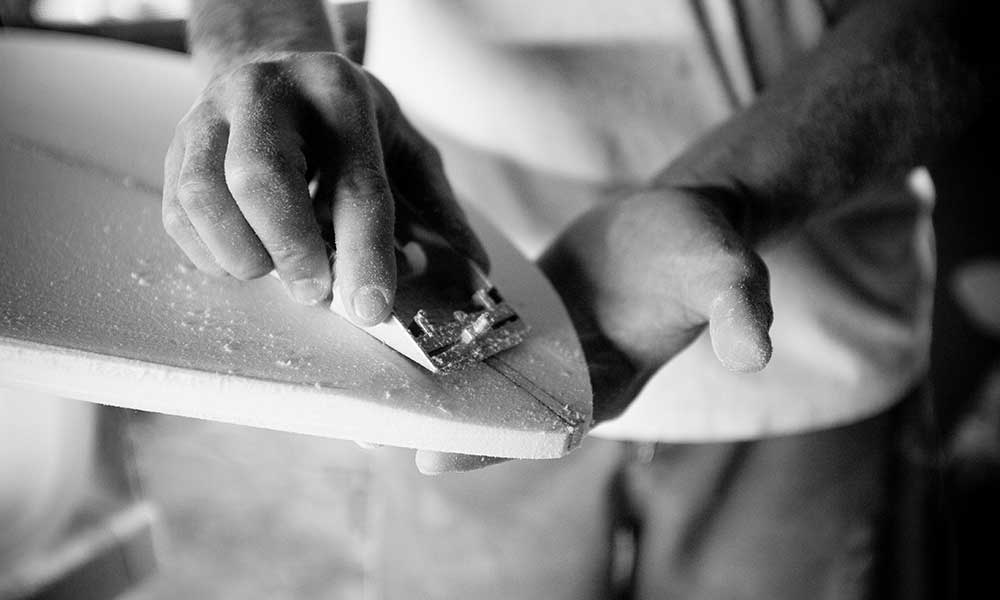Surfboards are made from a variety of materials and their construction has changed significantly as the sport has evolved and technology has improved.
What are Fiberglass Surfboards?
Fiberglass surfboards are created from a blank of polyurethane and are finished with a polyester fiberglass resin.
These surfboards can be a little fragile, but they are also very popular and have been in use for many decades.
They are suited to all types of surfer and have a very natural and responsive feel that makes them popular with experienced riders.
What are EPS Epoxy Surfboards?
Expanded polystyrene foam or “EPS’ is the same material used to create packing peanuts and disposable coffee cups.
It’s used the create lightweight and buoyant surfboards and is often combined with a fiberglass cloth and epoxy resin.
The foam is very dense and stiff but provides a unique level of durability and buoyancy that makes these surfboards a good fit for all experience levels.
They are also a little more environmentally friendly than some other options.
One of the drawbacks of EPS surfboards is that they are very sensitive to water and heat damage.
If there are any dings in the surfboard, water may seep in and cause serious damage.
Direct sunlight can cause the materials to expand and degrade, thus reducing the protection that they provide to the surfboard.
What are Foamies Surfboards?
Soft surfboards or “foamies” are considered more accessible than other types of surfboard and have helped to introduce the sport to many beginners.
They are made from a dense EPS foam and a slick bottom, but they are not finished with epoxy resin or fiberglass, which means they are not as susceptible to cracks and dings.
These soft-top boards are cheaper and more user-friendly, which is why they are so popular with inexperienced surfers.
EPS Vs Fiberglass Vs Foamies
EPS epoxy surfboards tend to be lighter, stronger, and better for the environment.
Not only is the resin less toxic to the environment, but the blank can also be recycled and used to make another surfboard.
At the same time, however, EPS epoxy surfboards have a level of buoyancy that may not be ideally suited for big waves and more experienced surfers.
That’s where fiberglass surfboard come in.
It’s also why many professional surfers will own a variety of different surfboard and have their preferred option for different types of wave.
As for foamies, they’re good for beginners and can also be used by experienced surfers who don’t want to risk any dings to their higher-priced surfboard when riding in rocky areas.
Are Surfboards Made of Wood?
If you don’t know anything about the sport of surfing, you could be forgiven for assuming that all surfboard were made of wood like the paipo or the alaia surfboard.
This was true for a number of years, but wood is rarely used in the construction of modern surfboards.
Early surfboards were made of hard and heavy woods, creating something that weighed over 130 lbs. and was difficult to transport.
During the 1940s, the invention of fiberglass allowed shapers to switch to balsa wood, which was softer, lighter, and easier to shape.
They would create the base of the surfboards from balsa and then finish with a fiberglass skin, providing additional protection and keeping the water away from the wood.
In the 1950s, hollow wood surfboards became popular.
These surfboards were considered to be more aesthetically pleasing, and by hollowing out the wood and coating with epoxy, they could also be made to be lightweight and durable.







